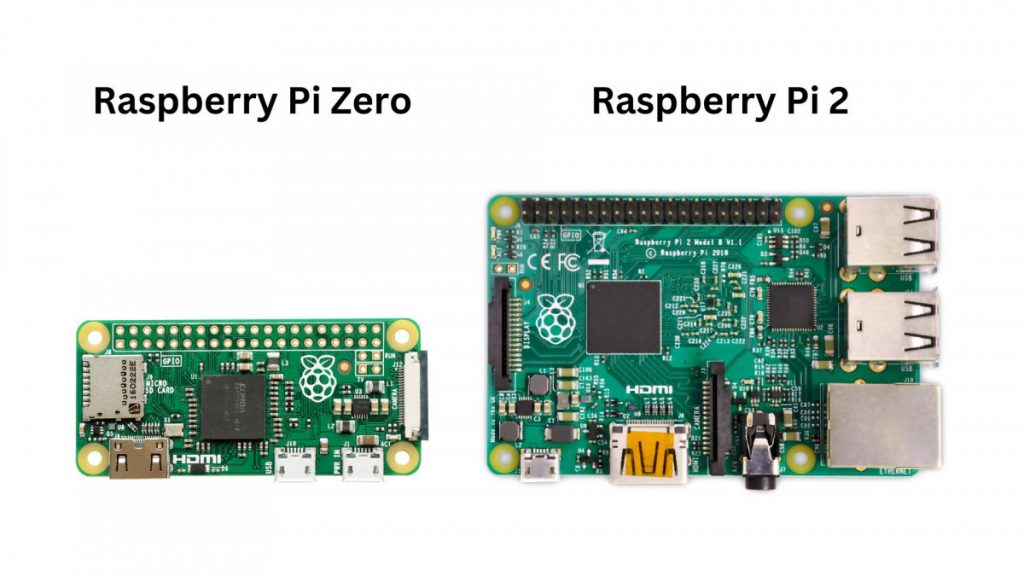When it comes to DIY electronics, everyone has probably heard about Arduino and Raspberry Pi. At first glance, both single-board computers may appear similar, but in reality, these two boards serve completely different purposes.
Even within each family, there exist various models, adding another layer of complexity to the comparison.
Join me on a quick journey through the topic of Arduino vs. Raspberry Pi, where we’ll discover all the differences, use cases, and what board you should use for your next electronics project!
Quick Summary - Arduino vs. Raspberry Pi
Arduino is a microcontroller board designed for simple tasks like controlling sensors and motors, while Raspberry Pi functions as a mini-computer with its own operating system, making it ideal for more complex tasks such as running software, robotics, or connecting to the internet.
What is a Microcontroller?
Before we can speak about the differences between Arduino and Raspberry Pi, we first need to clarify what a microcontroller is.
A microcontroller is a compact integrated circuit (IC) that combines the essential components of a computer, including a central processing unit (CPU), memory, and input/output ports, all on a single chip. Unlike general-purpose processors found in personal computers, microcontrollers are designed for specific tasks and embedded applications.
These devices serve as the brains of electronic systems, controlling the functions of various components. Microcontrollers are commonly used in a wide range of applications, such as home appliances, automotive systems, industrial machinery, and of course, DIY projects.
Microcontrollers don’t run an operating system like Windows, Linux, or MacOS. Instead, they run specific hardware-near software written in low-level languages like C, C++ or even assembly language.
What is Arduino?
Arduino is an open-source electronics platform built around a family of microcontrollers. The most common and beginner friendly one is probably the Arduino Uno, followed by the Arduino Nano.
Even though these boards are often referred to as microcontrollers, they aren’t really the microcontrollers themselves. The actual microntroller is a chip on the board. Everything that’s around the chip and on the board is just there for making working with the microcontroller easier and better for DIY projects and prototyping. For example, the Arduino Uno board additionally contains a USB port, voltage converters, a reset button, and an LED.

As Arduino is an open source platform, there are a ton of copies from other brands of these boards, sometimes also with small modifications.
The simplicity and versatility of Arduino boards make them a popular choice for DIY projects and prototyping among beginners as well as experts. Hence, there’s a gigantic community behind Arduino.
Check out all the different Arduino boards here.
What is Raspberry Pi?
In contrast to Arduino Boards, most of the Raspberry Pi products are not (based on) microcontrollers. Instead, they are full general purpose computers running an operating system like Linux on a single board (single-board computer).
What makes them special is their small size, making them perfect for prototyping and DIY projects.
Also, they offer GPIO (General Purpose Input/Ouptut) pins for connecting sensor, LEDs or other electronic components.
As they are a lot more powerful than microcontrollers like the Arduino, they are suited for much more complex tasks that also require an operating system for installing specific software, for example.
Probably the most common Raspberry Pi boards are the standard Raspberry Pi (3/4/5) and the Raspberry Pi Zero. Both of them come in multiple variations with different sizes of RAM or additional WiFi capability for example.

The Zero being the smaller, cheaper, and less powerful board compared to the standard Raspberry Pi.
Recommended: How to install operating systems on Raspberry Pi!
Even though the main focus of Raspberry Pi is single-board computers, they also offer a microcontroller board platform called the Raspberry Pi Pico with their in-house developed microcontroller RP2040.
This one can be directly compared to the Arduino Boards. Some of the Arduino boards even use Raspberry Pi’s RP2040.

Check out all the different Raspberry Pi boards here!
Arduino vs Raspberry Pi: What Board should I choose for my Project?
As we now found out, both boards are mainly used for prototyping and DIY projects, but when should I choose which board?
To answer this question, I came with some criteria helping to decide on which board to use for your next project:
Project Complexity
If your project involves simple electronics like basic sensor and actuators and only performs simple actions like reading the sensor data and moving some motors, an Arduino board might be sufficient.
However, if you need more processing power, for example for running machine learning models, a Raspberry Pi single-board computer is the better choice. Also, the Raspberry Pi makes it easier to run more complex applications on its operating system.
Connectivity
Consider the connectivity options required for your project. If you need GPIO pins for direct hardware interaction, both Arduino and Raspberry Pi provide these, but Arduino specializes in it.
Even though, there are microcontroller platforms with WiFi chips, if your project involves networking, Wifi, or Bluetooth, a Raspberry Pi might offer more integrated solutions.
Power Consumption
Microcontrollers like the Arduino boards generally have lower power consumption compared to the more powerful single-board computers like the Raspberry Pi, making them suitable for battery-operated or energy-efficient projects.
Cost
Even though the price difference isn’t very high, Arduino boards are cheaper than the more complex Raspberry Pi boards.
Most Arduino boards are in a range of 10$ and 30$, whereas Raspberry Pis cost anywhere between 15$ and 100$.
Learning Curve
Arduino is often recommended for beginners due to its simplified programming language and ease of use. Raspberry Pi might be more suitable if you are comfortable with Linux and want a more computer-like environment.
Scalability
If your project is likely to grow in complexity, consider the scalability of the chosen platform. Raspberry Pi, with its more powerful processing capablilites, may offer the better scalability for advanced applications. However, if you want to scale in quantity, for example for selling your project, the Arduino boards can be broken down into only the microcontroller itself, making the project even smaller and cheaper.
Conclusion
Arduino vs Raspberry Pi
The main thing you need to know is that Arduinos are microcontroller platforms, whereas most Raspberry Pis are single-board computers, with the exception of the Raspberry Pi Pico, which is also a microcontroller.
In general, microcontrollers are better suited for simple projects with basic electronic components that need to perform basic operations. Single-board computers like the Raspberry Pi are usually used for more complex projects that require more processing power and some kind of operating system.
Keep in mind that there are multiple brands manufacturing their own microcontroller boards or single board computers, not only Arduino and Raspberry Pi. These two are just the most common ones used in prototyping and DIY projects.
Thanks for reading!

